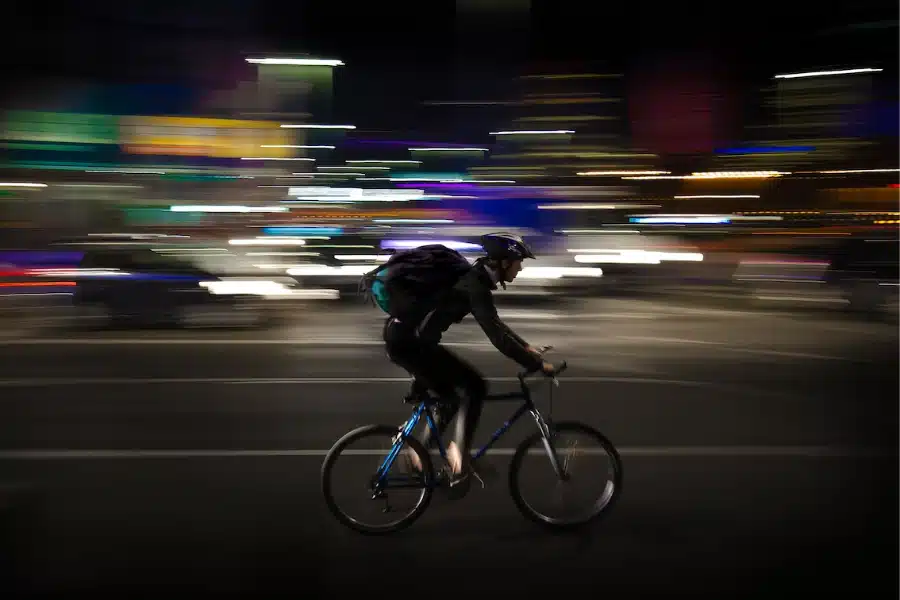It’s the worst-case scenario for any cyclist, but sadly, many rides end in disaster. Over 900 cyclists are killed in traffic accidents, and over 100,000 are injured due to bicycle accidents in the US.
A bicycle accident may result in severe injuries and, in worse cases, death. For this reason, you will need to contact a personal injury lawyer to help you file a compensation claim. When choosing bicycle accident attorneys, conduct thorough research on their experience and if they have helped other clients get fair compensation in similar cases.
Although bicycling is a great way to save time and gas and is better for the environment than driving, it still has risks. Without any outside Armor, they are particularly vulnerable to the life-threatening effects of any accidents. Following these guidelines can help you stay safe when cycling.
Ensure you follow all the traffic rules
Awareness of your surroundings is one of the best strategies to prevent a bicycle accident. Several precautions are in place under the law to avoid accidents. Riders, for example, must remain in bicycle-only lanes and are not permitted to weave in and out of stopped traffic.
Bicycle accidents happen for a variety of reasons. Several cyclists, for example, are seriously injured or killed when they ride against the flow of traffic. Note that you must follow the same traffic laws as someone driving a car. This entails stopping at red lights and stop signs and obey all other signs.
You must also provide correct signs when you are going to turn or stop. If you don’t know these signals, you should learn them before riding your bike on a public road.
Apart from moving trucks and cars, there are additional hazards on the road. Ramming into an open parked vehicle door may result in catastrophic injuries. Weather and unexpected road debris may all contribute to an accident. Cyclists riding on sidewalks in violation of traffic laws may cause accidents with pedestrians.
You may still enjoy yourself while riding your bike. Just try to be aware of everything around you and follow traffic rules.
Always wear a helmet
Bicyclists are not required to wear helmets in all states. Nonetheless, studies suggest that wearing a helmet reduces the chance of severe injury by 70%. The most common cause of fatal bike accidents is head injuries.
However, not just any helmet will suffice; you’ll need one built exclusively for bike riders. If you fall off your bike and hit your head, your helmet may be the only thing that keeps you from suffering a possibly devastating traumatic brain injury.
Wear reflective gear
Low visibility is a major contributor to bicycle accidents. It’s more probable that an accident will happen if a motorist can’t see you. This is especially true at intersections, where you two are more likely to meet.
Putting reflectors on your bike is an excellent first step, but you should also ensure you wear bright or luminous clothes. Enhancing your visibility will reduce the risk of an accident.
Check all your equipment before going for a ride
There are several potential contributors to a bike accident besides a careless motorist or an obstruction in the road. Several accidents involving bicycles may be traced back to faulty parts. The likelihood of an incident involving your bicycle, helmet, and other equipment may be reduced if you do a thorough pre-ride inspection.
Check the air pressure in your tires. Ensure that the lights and reflectors are functioning properly. You should check your gears and chains for damage. Take these precautions to avoid a life-altering accident.
Learn your hand signals
Unfortunately, intersections are popular spots for bicycle accidents. A thorough understanding of bike hand signals is essential. Communicating with other motorists and bikers on the road is essential.
Unless you give the motorist enough notice, they cannot predict your next move. Your hand gestures should be easy for others to read. Accidents are less likely to occur when motorists have a shared understanding of the road.



![10 Best Bags for Nurses | Personal Recommendation [2023] 4 Best Bags For Nurses Reviews in 2021](https://knowworldnow.com/wp-content/uploads/2022/12/Best-Bags-For-Nurses-Reviews-in-2021.webp)



![F95Zone Games - The Ultimate Guide for 2021 [F95Z Guide] 8 F95Zone Games](https://knowworldnow.com/wp-content/uploads/2021/07/ArTtW5LrK3b-z-0-y-637f48d86203817a9042a857.webp)